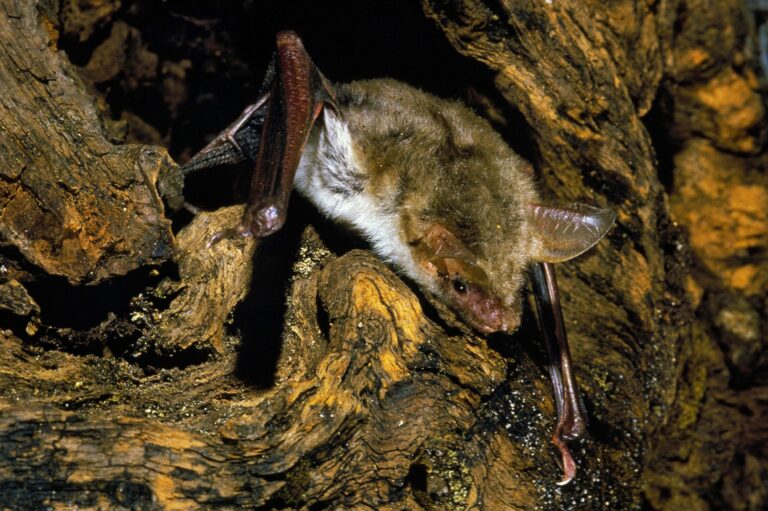Myotis myotis

The Greater Mouse-eared Bat can weigh up to 40 g and can reach a body size of up to 80 mm. The wingspan measures 350-430 mm, and the ear length ranges between 23-31 mm. Myotis myotis is often found in proximity to settlements and hibernates in caves, tunnels, and cellars (Schaefer 2018). The dorsal side of the body is brownish in color, while the ventral side is light gray to white (Southern 1965).
Diet: The Greater Mouse-eared Bat feeds almost exclusively on insects. The ground beetle plays a crucial role in its diet as it is predominantly consumed. Another component of its diet includes spiders (Steck and Güttinger 2006).
Threat status: According to the Red List of Germany, Myotis myotis is classified as “least concern.” However, according to Annex IV of the Habitats Directive, it is considered a “strictly protected species.”
-
Steck, C & Güttinger, R (2006)Today and a hundred years ago: Carabid beetles are the main prey of the greater mouse-eared bat (Myotis myotis). In: Schweizerische Zeitschrift für Forstwesen 157 (8), S. 339–347.
-
Schaefer, M (2018)Brohmer – Fauna von Deutschland. Ein Bestimmungsbuch unserer heimischen Tierwelt: Quelle & Meyer Verlag GmbH & Co.
-
Southern, H (1965)Handbook of British mammals. Mammal society of the British isles. Unter Mitarbeit von Robert Gillmor und Erik Thorn: Blackwell Scientific Publications Oxford.